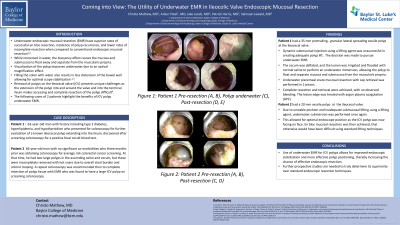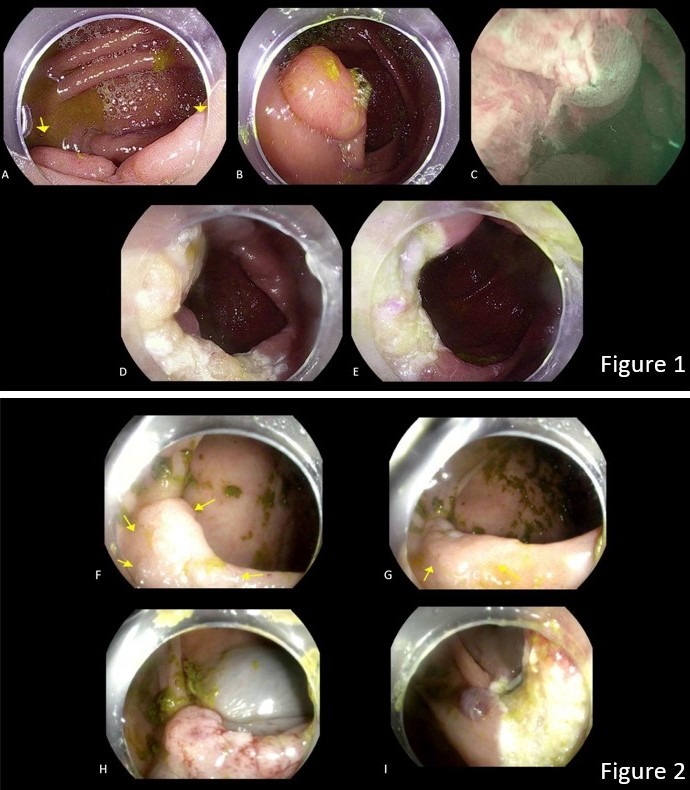Sunday Poster Session
Category: Endoscopy Video Forum
P0387 - Coming Into View: The Utility of Underwater Enodscopic Mucosal Resection for Ileocecal Valve Polyps

- CM
Christo Mathew, MD
Baylor College of Medicine
Houston, TX
Presenting Author(s)
Baylor College of Medicine, Houston, TX
Introduction:
Endoscopic resection of colon polyps reduces colon cancer mortality. However, specific polyp locations, such as the ileocecal valve, can make the removal challenging, increasing the risk of polyp recurrence and needing repeated colonoscopies. Underwater endoscopic mucosal resection (EMR) techniques can aid in the complete resection of hard-to-reach lesions. Here, we present two cases of successful removal of ileocecal valve polyps using underwater EMR.
Case Description/Methods:
Patient 1 had a 35 mm protruding, granular lateral spreading sessile polyp at the ileocecal valve. The Pathfinder over tube provided stabilization. Dynamic submucosal injection using a lifting agent did not create an adequate polyp lift. The decision was made to pursue underwater EMR. The cecum was deflated, and the lumen was irrigated and flooded with normal saline to perform an underwater immersion, allowing the polyp to float and separate mucosa and submucosa from the muscularis propria. Underwater en bloc resection with cap retrieval was performed. Complete resection and retrieval were achieved, with no observed bleeding. The lesion edge was treated with argon plasma coagulation (APC). Patient 2 had a 20 mm sessile polyp at the ileocecal valve. Due to the unstable position and inadequate submucosal lifting using a lifting agent, underwater submersion was performed. This allowed for optimal endoscope position as the ICV polyp was now facing en face. Piecemeal mucosal resection was then achieved, that otherwise would have been difficult using standard lifting techniques. Pathology for both cases revealed sessile tubulovillous adenomas without surrounding dysplasia. 6-month follow-up colonoscopies showed no recurrence.
Discussion:
The successful use of underwater EMR for ileocecal valve polyps is highlighted in this discussion. The use of underwater EMR for ICV polyps allows for improved endoscopic stabilization and more effective polyp positioning, thereby increasing the chance of adequate endoscopic resection. Further prospective studies are needed to determine its superiority over standard endoscopic resection techniques.

Figure 2: Patient 2 Pre-resection (F, G), post-resection (H, I)
Disclosures:
Christo Mathew, MD, Ankur Patel, MD, Jake Jacob, MD, Patrick Harris, MD, Salmaan A. Jawaid, MD. P0387 - Coming Into View: The Utility of Underwater Enodscopic Mucosal Resection for Ileocecal Valve Polyps, ACG 2023 Annual Scientific Meeting Abstracts. Vancouver, BC, Canada: American College of Gastroenterology.
